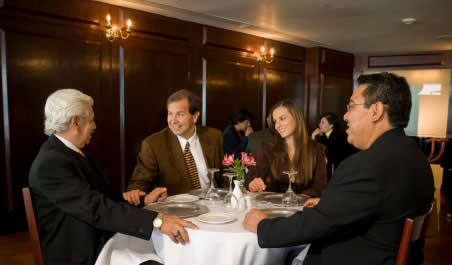Lunch: Your Secret Weapon

Top salespeople have often used lunch as a way to help bond with a customer and close a deal. Getting the customer out of the office allows for relaxed conversation and freedom from ringing phones and similar interruptions. Going beyond those obvious benefits, though, there’s research that shows messages are more persuasive when accompanied by food.
Decades ago, Yale researchers had subjects read a “persuasive communication” while eating food; two other groups read the material with no food in one case, and no communication in the other. The subjects were told that the provider of the food was not the source of the communication and did not endorse it. The researchers found that opinions changed most when the subjects ate food while reading the material.
This simple experiment is just one of many that show that association with a favorable stimulus can change attitudes. Deliver good news, and you’ll be liked more. Accompany a client to an enjoyable activity, and some of that positive feeling will rub off on you (and your message).
Triple Play
So, taking a client to lunch delivers in at least three ways. As shown by the association experiment I just described, a good meal will make your pitch more persuasive. In addition, lunch offers the opportunity to socialize. In It Really DOES Pay to Schmooze, we saw that negotiation outcomes were much more successful for both parties when they had a chance to socialize first. Finally, to score a neuromarketing trifecta, treating a customer to a nice lunch may also invoke reciprocity, a feeling that one favor should be returned with another.
Do lunch the brainy way!
These various findings can be turned into a simple lunch plan. First, start by socializing – talk about families, golf, or whatever common interests you have. Relating to each other as people sets the stage for a deal. During the meal, introduce your most persuasive elements for working together. This will require a deft touch – nobody wants a good meal ruined by a sales pitch. Don’t overdo this phase, just work those key points into the conversation. If you can pull that off, by the end of the meal you’ll be much closer to a successful deal than when you started.
